The Mayan civilization is regarded as the most sophisticated and technologically advanced civilization, not merely in Mesoamerica but in the world.
This diverse group of indigenous people inhabited the parts that we know as Belize, Honduras, El Salvador, Mexico, and Guatemala.
Their rule spanned about 2000 years, but their most prosperous period ranged from 300 A.D. to 900 A.D., commonly known as the Classic Period.
Some of the most incredible inventions of the ancient Mayan civilization are listed below in this article.
What did the Mayans invent?
Content
The Mayan Civilization, originating about two thousand years ago, invented rubber, mathematical number zero, the Mayan calendar, a whole new language with hieroglyphics, and an expert way of understanding astronomy.
What was the five greatest invention of Mayans?
The accuracy of astronomy, the herbal efficiency in curing diseases, agricultural advancement, the beautiful art and architecture, and the novelty of their calendar system.
What technology did Mayans have?
Jadeite tools were principal tools used by all artisans and sculptors of the Mayan civilization. They used it to carve on stones, stucco, wood, and the like. It came in various shapes and sizes such as chisels, gouges, etc.
Did Mayans invent zero?
The Mayans independently created zero in around 4 A.D. It was first recorded in Mesopotamia in circa 3 B.C.
Did the Mayans invent wheel?
The Mayans constructed roads or causeways with the help of stone rollers but they did not invent the wheel.
10. Chocolate

Source: Wikimedia Common
One of our favorite confectionery items, the chocolate, was a Mayan invention or, let’s say, a Mayan discovery. Moreover, chocolate is derived from the word xocolatl, which means bitter water and concoct a drink.
It was around 250-900 A.D. when the Mayans realized that cocoa beans tasted delicious when aged, simmered, and ground to mix with other fillings. They would alternately pour the mixture from one cup to another until it formed a frothy foam on the surface. The Mayans drank this hot, steamy brew in a clay cup.
The earliest known mural is painted in the pyramid, where a woman is seen preparing or offering the frothy mixture to a man in exchange for the dough to make tamale. The mural depicts a mid-16th century indigenous Mexican woman preparing chocolate. Since they attributed it as God’s food, many cocoa pod murals can be observed in Mayan artifacts.
Chocolate was more than a mere confectionery as researchers believe that the Mayans bartered them as coins as they did with maize, tobacco, and grains. Precisely 180 different scenes were observed by the archeologist Joanne Baron, who depicted commodities delivered to Mayan rulers as tribute or as tax. It was more like a currency for the Classic Period, an essential item that could explain the Mayan downfall.
Some researchers argue that as cocoa beans declined, Mayans lost one of its central pedestal holding their economy. Thus, the crop failure and disrupted cocoa supply ignited a political power leading to an economic breakdown. While not many researchers corroborate this theory, it reflects the significance of chocolate.
9. Law and Order

Source: Wikimedia Common
As the leaders emerged, so did their laws in the ancient states of Mayan. They were issued by halach uinic and his council in any of the conditions. Similarly, batabs were the judges who heard and adjudicated all civil and criminal proceedings.
Punishments in their legal system were harsh and ruthless, the most common being death. Rape, murder, adultery, arson, incest, and treason were major acts that offended Gods, and capital punishment was ascribed to them.
The perpetrators were usually thrown off a cliff while strangling with a rope or dropping complex objects to their heads and neck to kill them instantly. However, the Mayans distinguished between accidental and intentional crimes, and the former entailed restitution or selling a slave to the victim’s family.
Cutting the hair short was a sign of disgrace, and so the perpetrators of minor crimes would have their hair shortened. They were levied higher taxes and sent to the army instead of killing them. Any little committing a crime was made a slave for his misconduct.
Similarly, temporary slavery or slaves for life was another punishment based on the nature of the crime. Another form of punishment was the confiscation of property and selling at an auction. Only a grave crime would yield this type of punishment.
Hence, the Mayan laws were stringent that maintained a civilized society for years and years. It is a template upon which the modern rules are based since it espouses the collection of evidence and judges to decide upon a case, not to forget the distinction between accidental and intentional homicide.
8. Hallucinogenic Drugs
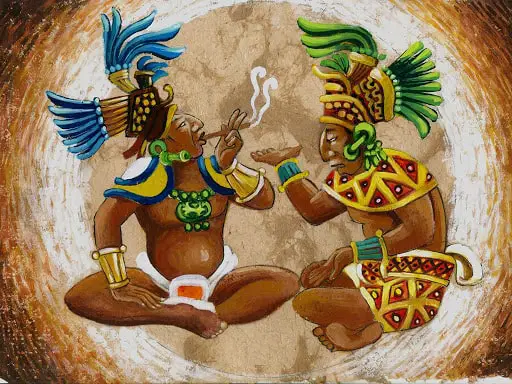
Source: Wikimedia Common
The consumption of hallucinogenic or consciousness-altering substances was varied in the Mesoamerican culture. A study found that mushrooms and dried toad skins were integral to healing, curing, rituals, and ceremonies performed by the ancient Mayans.
According to the report, the ancient Mayas drank balché, concocted by mixing the infusion of barks of Lonchocarpus longistylus and honey. It was a popular drink consumed at the time of a ritual involving communication with the spirits. The psychedelic properties of the mixture imparted temporary consciousness alteration.
Predicaments, often incomprehensible such as bad weather and misfortune or wars, were communicated with the spirits. It was a divine means of future-telling. And in an attempt to accelerate the attainment of a trance state, they smoked tobacco and injected ritual enemas mixed with psychoactive substances or alcohol.
Pulque or chi was another alcoholic drink made by fermenting the sap of the maguey plant. Different ceramic works from the classic Mayan period produced vessels marked with the glyph ‘chi.’ Furthermore, sacred mushrooms or modern-day magic mushrooms were among other consumables like the hallucinogenic cacti and dried frog skin.
7. Rubber
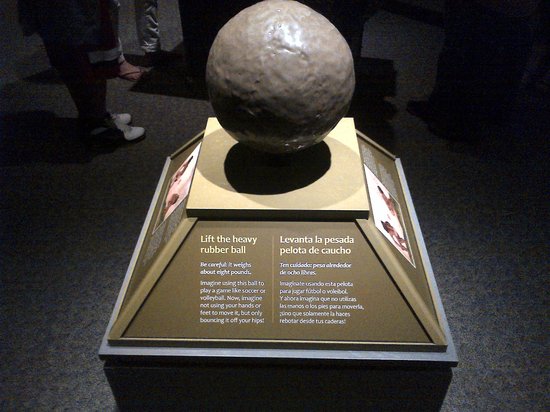
Source: Wikimedia Common
The Mesoamerican civilization, including the Mayans, were the first to invent rubber balls or ōllamaloni in the native language. While people assume rubber was not made applicable until the vulcanization process developed in 1840 by Charles Goodyear, the Mayans had invented ball games 3000 years ago.
They harvested a natural latex-the milky fluid oozing out from rubber trees and added the juice from morning glory vines. A specific chemical native to the vines lessens the brittleness of hardened latex.
A research proved that mixing different proportions of the two chemicals produced different varieties of rubber, some even bouncy ones. It explained the consistency of the mixture prepared by ancient Mayans to produce a ball for their games.
Rubber trees and morning glory grew at proximity, which established them as sacred plants in their culture—primarily morning glory due to its hallucinogenic properties used during religious ceremonies.
One of the violent ball games was Pok-A-Tok, played with thighs and hips. It constituted sanctitude, religious significance as well as the decisive factor between belligerents and noblemen.
6. Ball Court
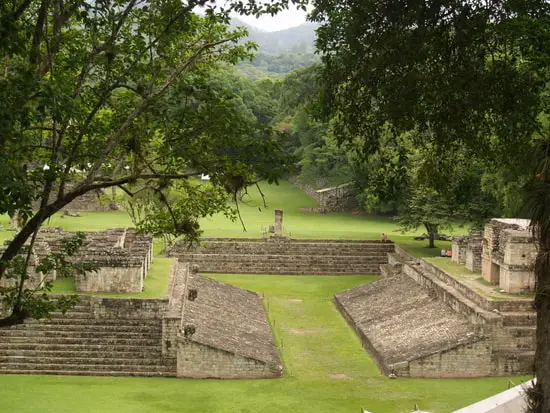
Source: Wikimedia Common
Since the invention of the ball and ball games, the Mayan civilization also invented the ball courts. Almost every Maya ruin consists of a ball court. In fact, in the last 20 years, more than 60% have been found, with more than 1300 identified.
Although the courts vary considerably in size, their architecture is quite similar everywhere: a narrow alley with horizontal, vertical, and sloping walls on either side, giving it a characteristic I-shape. In addition to ball games, the ceramics portray a wrestling game being played in these courts.
In addition, these courts were also sites for major feasts for the people, even though it is not confirmed whether they were conducted in ball games or any other event. They were not merely the sites of spectacle but also rituals. Their sitting around sacred vicinities of the city corroborates the fact that they were an essential Mayan asset.
Ball games were not merely recreational, but it was believed that good pitted evil in the arena. It was interpreted as a war between gods and evils as it was sometimes the ultimate tie-breaker between the belligerents and the noblemen.
The players donned the special gear and entered the arena. The rules were not specific except that the balls were passed around with knees, hip, and thighs to pass it through a stone ring ultimately. Whoever ringed the ball first won, and the losers were seldom sacrificed.
A ring still hangs 20 feet above the playing alley in the Chichen Itza pyramid, making it extremely difficult for the players to ring it.
5. Calendar
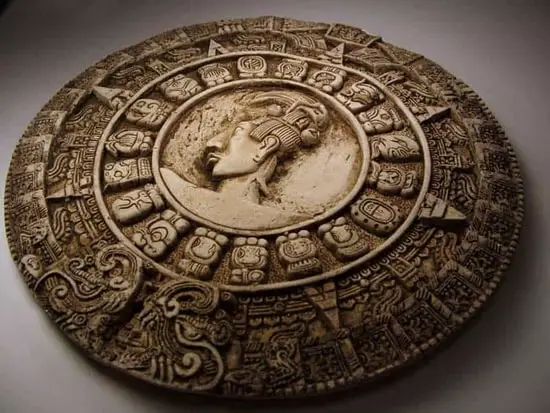
Source: Wikimedia Common
The Mayan calendar was based on the alignment of stars and is said to have originated in the pre-classic period. The calendar was more accurate than any other calendars previously created. It was based on the solar and lunar movements and also the eclipses, and the activities of the planets.
The Mayan calendar is one of four calendars and is called ‘the long calendar.’ It is usually used to measure long periods, both in the future or past. The calendar is round and contains Mesoamerican hieroglyphics. Each of the disks represents time frames and is counted in multiples of 13 and 20.
Experts have concluded that this long calendar started around August 13 or 14 of3114 B.C. and ended on December 21 or 23 of 2021. Hence, the prediction of doomsday or end of the world.
The first calendar is Haab, which spans a year and is based on the Solar cycle. There are 18 months of 20 days in each month and five additional days called Wayeb. The complete calendar consists of 52 repetitions of 365 days.
The best way to fathom this complicated calendar created years ago is to put it all together and try to understand it better. It was a breakthrough in our civilization that helped us understand the concept of date and time.
4. Writing System
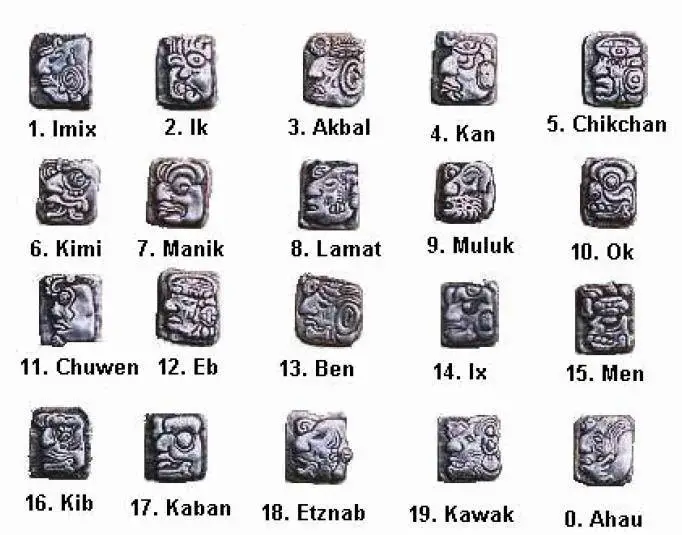
Source: Wikimedia Common
Expounding on the early developed system of the Olmec or independently, the Mayans developed a sophisticated system of writing using pictographs. The second half of the Pre-Classical Era (c.3000 BCE) saw the advent of a breakthrough revolution in the way we communicate. Since then, the language flourished and reached maturity in the Classical period.
Mayans began inscribing their detailed images onto tall stelae, altars on the surface of the doors and stairs. Another striking piece is the pottery and caves and interior walls as they were often adorned with these images, meaningful only to a learned eye.
The image or pictograph constitutes a triple combination of actual actions or pictures. These small images represented vowels, consonants, pre-fixes, suffixes, adjectives, symbols, and even syllables. Each side projected a different activity or object, which, when read together, made meaningful words.
These symbols were written in blocks and formed two columns. One should begin from the top left, move horizontally for two rows and then repeat from the row below. If there are any short sentences, they are read vertically in one single line or horizontally.
As Mayans believed that God Itzamna invented writing, they didn’t restrict women from reading and writing. However, it was only accessible to the elite group, such as the priests or noblemen.
3. Mathematics
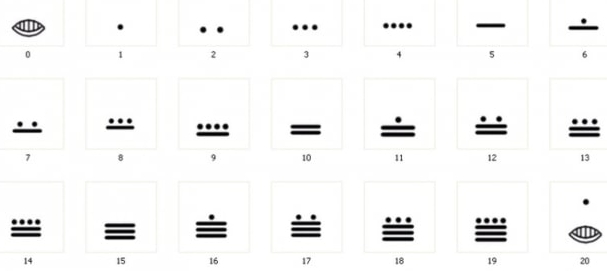
Source: Wikimedia Common
With the help of just three symbols, the Mayans developed a vigesimal system of mathematics, i.e., a system based on 20. Not only that, they valued zero, represented by a shell, which was hitherto uncounted. A dot represented one, shell zero, and a five represented by a bar.
Instead of 1, 10, 100, 1000 of our current numerical system, they employed 1, 20, 400, 8000, and so on. Calendar dates and other numbers were organized from top to bottom rather than placing them horizontally. With a combination of these three symbols, one could quickly write the number to infinity.
There were specific numbers believed to be exceptional by the Mayans. Such as the number 5 as they were the number of fingers and toes. Similarly, 20 was another special for it could be counted on our toes and fingers. The number 13 represented the number of gods in the Mayan pantheon, and 52 illustrated a bundle of years similar to a century.
Mayans also employed glyphs as numbers. For instance, number 1 was depicted by young mother earth. Similarly, number 2 was represented by a god of sacrifice and so on. The numbers are often described as certain gods and goddesses, which further complicated decrypting the hieroglyphs. Numerical were often combined with glyphs, or glyphs were accompanied by bars and dots to form numbers.
Mathematics can be seen in many great wall paintings and Mayan Art, which sufficiently underscores that it was an essential discipline in that civilization. Also, the mathematicians are recognized from the scroll of numbers that propagate from under their arms.
2. Mayan Art
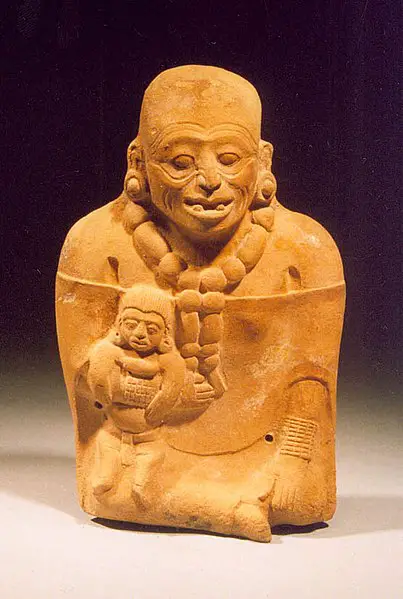
Source: Wikimedia Common
Right from miniature to monumental, Mayan Art permeates all forms of sculptures, paintings, murals, pottery, etc. It birthed from churning between the Yucatan Peninsula and the Olmec civilization, thus, shaping into a unique art form of its own.
During the first millennium B.C., Mayan artists carved in wood, stucco, bones, shells, stones, and clay. After that, in the classical period, they promoted royal buildings and the bodies of the kings and queens of Tikal, Palenque, Copan, etc., on royal commands. Soon, they began adorning temples as offerings to their deities.
Mostly, the Mayan artists drew their rulers and supernatural beings. They sculpted the royal family sitting, holding things, and interacting with one another. Deities, slaves, ladies, and lords were drawn limestones or volcanic tuffs with the help of stone tools. They carved and polished the surfaces delicately but with enormous labor.
Jade was symbolic of new beginnings to the Mayans. Hence, they carved on jades to be worn as amulets by rulers, deities, and tombs to carry on to their afterlife. Similarly, wooden sculptures were ornately carved and placed on temple doors and beams. However, only a few such pieces are extant due to the humid tropical climate.
Intricate designs on fired clay prove Mayan artists’ virtuoso. From burials of family members to panels of deities disguised as humans, their realistic and vibrant figurines were very expressive. Moreover, elaborate carvings on pottery vessels and incense burners are remarkable pieces that testify to their skill.
Pyramids are one of the world’s most mysterious discoveries that draw keen attention to their façade. The architecture, paintings, hieroglyphs, and minute details of every pyramid block are a glaring example of their Art.
1. Astronomy
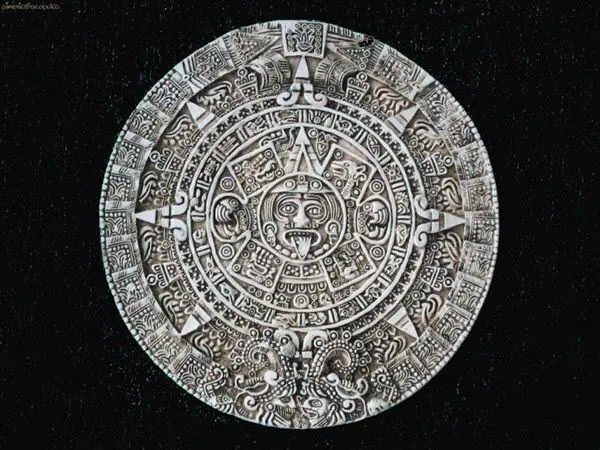
Source: Wikimedia Common
There are hundreds of stations scattered at different geographical locations that study the sky, lunar and solar movements, and other heavenly bodies. Scientists have invented powerful telescopes to penetrate the cosmic objects’ surface to explore the world beyond ours. This was inspired by none other than the Mayan civilization.
The Mayans were fascinated with the outer world of astronomy and Gods. They sought to understand the repetitive movements of the sun, moon, and stars. Since they lacked sophisticated and advanced technology, they patiently observed the cycles of the sun, changes in seasons, and other phenomena.
They interpreted the movements of stars and planets as gods traveling from the sky to the underworld and other celestial destinations. They believed that Earth was immovable while other heavenly bodies were gods speaking to them. Hence, finding out their cycles and meanings was of paramount importance to them.
The sun-god of Kinich Ahau was the most important god in their pantheon, as depicted in Popol Vuh, their sacred book. Some even believed that certain dynasties were direct descendants of the sun. They waited long hours to observe the sun’s solstices, eclipses, and equinoxes and accurately predicted them.
Moon god or Ix Chel was equally important, representing a woman or rabbit, invariably linked to fertility and childbirth. Venus was a substantial planet to the Mayan astronomers. They waged wars and made sacrifices of slaves based on the position of Venus in the night sky.
They invented the calendar and sundial for telling the time, based on similar observations, which almost coincides with today’s words.
Conclusion
During their period, Mayans flourished farming, communicating, observing planets, arithmetic, and whatnot. Most of their inventions were open to women and people of all classes, for example, learning, consuming chocolate, and even simple arithmetic. While their creations may resemble ours, they were far better in the given circumstances and resources.
Many other inventions of this great civilization, such as medicine and agriculture, prove that they were far ahead of their times.
